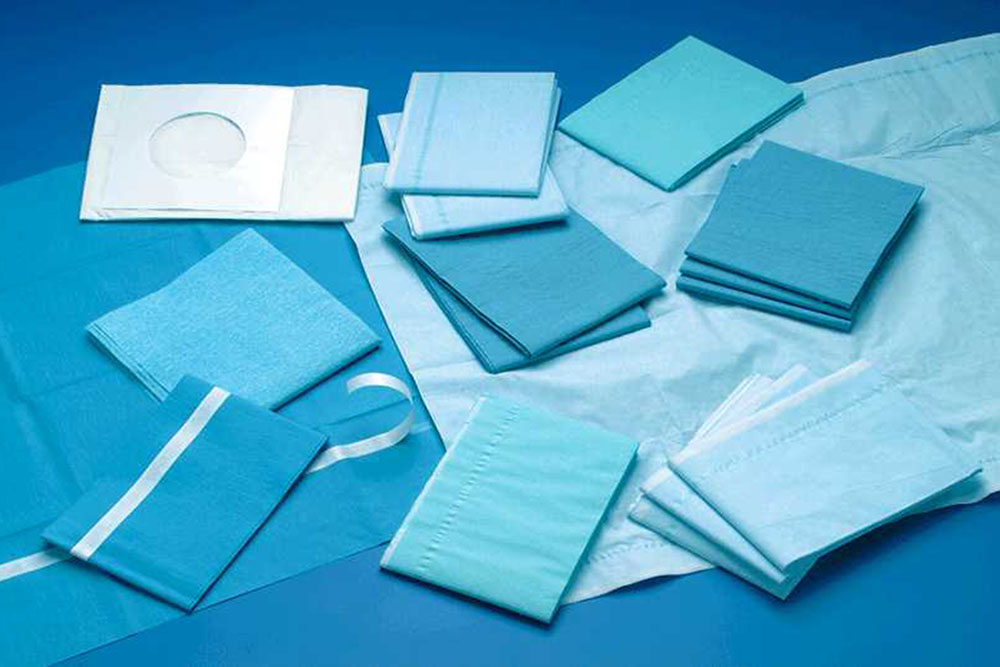Surgical procedures have come a long way in reducing risks of infections and improving patient outcomes. One area that has seen a significant transformation is the movement from reusable to disposable surgical sheets. Disposable surgical sheets have become popular among healthcare facilities due to their advantages in infection control and ease of use.
History of Disposable Surgical Sheets
In the past, reusable surgical sheets made from cloth or other materials were sterilized and reused for multiple procedures. While this practice saved costs, it posed infection risks if sheets were improperly sterilized between uses. The earliest disposable surgical sheets first emerged in the 1970s as a more hygienic alternative. However, they did not gain widespread adoption until the 1990s due to higher initial costs compared to reusable sheets.
Advancements in materials and manufacturing technologies have made modern disposable surgical sheets much more affordable and effective. Their use has grown exponentially over the past two decades driven by evidence that they reduce surgical site infections and streamline cleaning procedures in hospitals. Today, the vast majority of surgical procedures in developed countries employ single-use disposable sheets.
Infection Control Benefits
One of the chief advantages of Disposable Surgical Sheets is superior infection control compared to reusable sheets. When sheets are used only once and discarded, there is no risk of dirty sheets being accidentally reused or of residual pathogens surviving another sterilization cycle. Numerous clinical studies have associated disposable surgical sheets with significantly lower rates of surgical site infections.
A large meta-analysis published in 2015 analyzed data from over 35,000 surgeries and found that disposable sheets reduced the risk of surgical site infections by as much as 20% compared to reusable linen. These infections can have devastating consequences for patients such as chronic pain, extended hospital stays, even death in severe cases. By eliminating reusable linen from the operating room, hospitals are better able to maintain aseptic environments.
Environmental Impact Concerns
While disposable surgical sheets provide clear safety and efficiency benefits, there are growing concerns about their environmental impact. Hundreds of millions of sheets are used and disposed in landfills or incinerated every year, contributing to pollution and waste. However, manufacturers have been working to address this issue by developing sheets from more sustainable materials that are clinic-ready sterilized to reduce packaging.
Some newer sheets incorporate recycled plastics, agriculturally derived bioplastics or plant-based materials like wood pulp. Companies have also optimized sheet designs to use less material without compromising strength or barrier properties. Together, these eco-friendly innovations are making disposable surgical products greener without compromising performance. Going forward, governments and healthcare providers will play a role in Transitioning to the most sustainable disposable sheet options wherever clinically appropriate.
Cost Savings and Workflow Efficiencies
Despite higher upfront purchase costs, well-designed disposable surgical sheets can actually reduce long-term spending for hospitals. Reusable linen requires substantial maintenance like regular washes, sterilization cycles and quality checks which tie up costly staff and utility resources. Disposables simplify workflow by eliminating these cleaning steps and logistical complexities.
Overtime and overtime pay for staff responsible for washing and sorting used linen adds significantly to operational costs. Several economic assessments have found that switching to disposables recoups any additional sheet costs within 1-2 years thanks to workflow simplification. Disposables also help hospitals address staffing shortages which are becoming more acute worldwide.
By removing cleaning from the critical path in surgical areas, disposable sheets allow for more efficient turnover between cases. This increases overall operating room utilization rates and capacity. Some studies indicate capacity can be boosted by 10-15% with disposables which translates to many additional revenue-generating cases annually. Along with infection control, cost efficiencies strengthen the case for disposable surgical sheets in modern healthcare.
Regulatory Standards and Procurement
Stringent regulation ensures the quality, safety and performance of medical-grade disposable surgical sheets. Popular standards like AAMI PB70 and ISO 15497 among others specify requirements around barrier properties, strength, biocompatibility and sterility validation. Only sheets meeting such international standards stamped by notified regulatory bodies can be procured for medical use.
Healthcare facilities screen suppliers carefully to source sheets from reputable brands with consistent quality. Given the clinical importance, contracts usually involve batch testing provisions along with warranty and liability terms in case of any product issues. Global giants with decades of expertise in healthcare materials dominate the market but local manufacturers are emerging too with cost-competitive offerings.
Online portals let hospitals efficiently compare features, prices and lead times of different sheet models from multiple suppliers on a single platform. Artificial intelligence is now powering predictive analytics to forecast consumption and automate replenishment preventing stock-outs or expiries. This enables just-in-time inventory management for optimized value in sheet procurement.
Advancing Material Sciences
Material sciences continue innovating disposable surgical sheets. New nonwoven fabrics and composite films impart unmatched barrier properties while balancing other requirements like strength, cost and ecological footprint. Advanced polymer engineering delivers breathable, liquid-repellent and antimicrobial coated sheets without using hazardous chemicals.
Companies are developing sheets made from fast-biodegrading biopolymers, plant-based fibers or even algal biomaterials. Some explore graphene-mixed formulations for unmatched effectiveness yet minimal raw material usage. Nanotechnology too promises sub-micron layered structures providing multifunctional protective barriers. Such cutting-edge material options could make future disposable surgical sheets even safer, greener and more affordable.
*Note:
1. Source: Coherent Market Insights, Public sources, Desk research
2. We have leveraged AI tools to mine information and compile it

